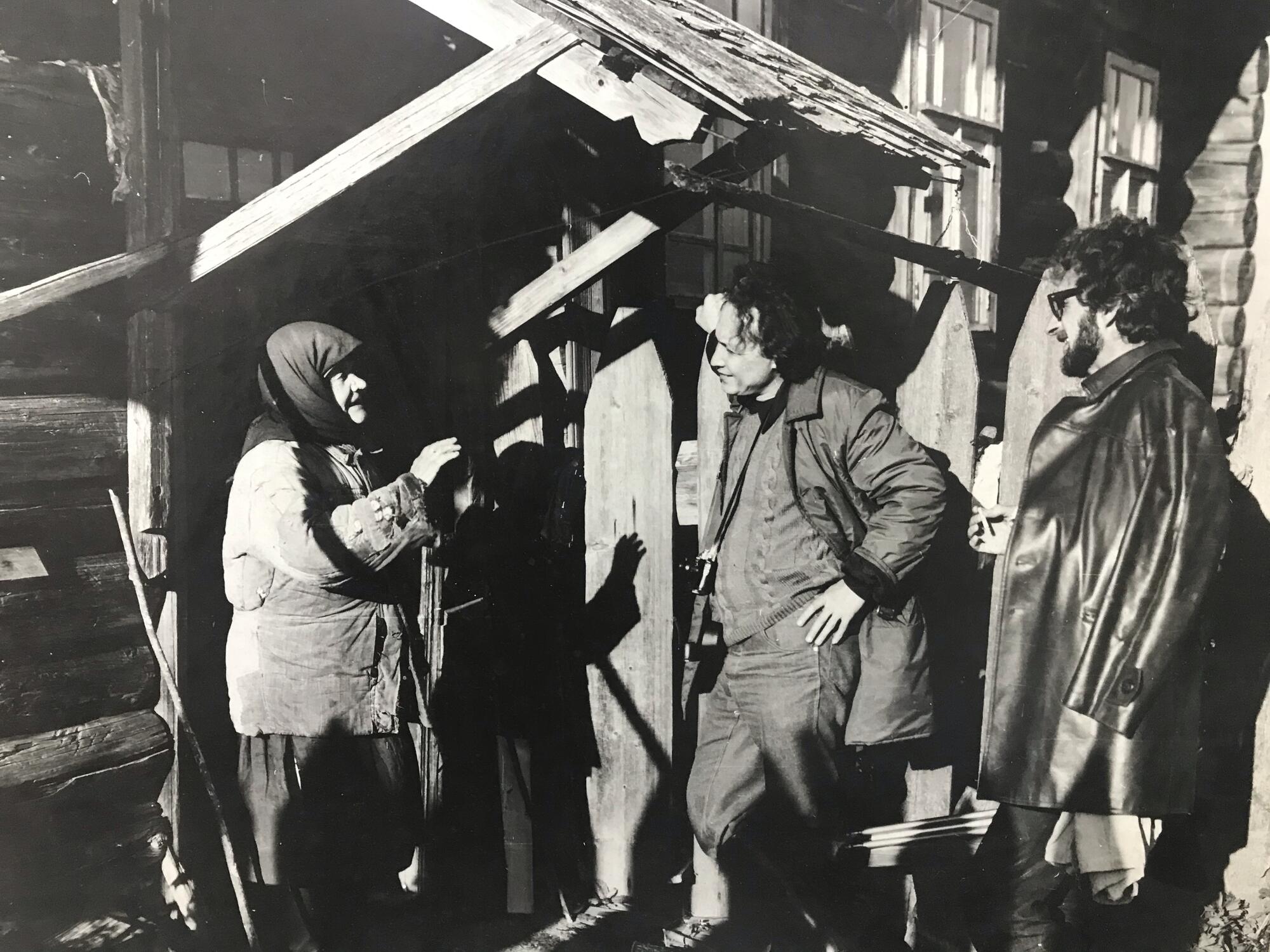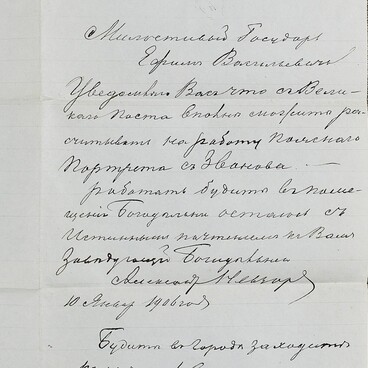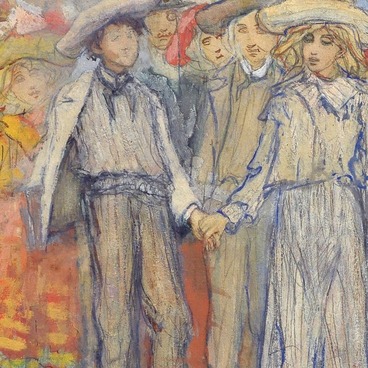The name Yefim Chestnyakov was rescued from possible oblivion 7 years after his death thanks to sheer luck. In summer 1968, employees of Kostroma’s regional fine arts museum, Vladimir Makarov, Gennadiy Korf and Vera Lebedeva, were returning from an exploratory trip to the Kologrivsky District. In a house of a local woman in the village of Shablovo of Kologrivsky District, they, by chance, came across some paintings and drawings by an unknown artist, which drew their attention. The inhabitants of the village told the workers from the museum about the local artist who they simply called Yefim. According to them, he left behind many different paintings and various hand-molded figurines, made out of clay, after his death. And his house, they were told, was under big old poplars.
In many of the homes, Yefim Chestnyakov’s works of art were hung next to icons in sacred (red) corners, while his larger creations were stored in cool gornitsas (living quarters) and even storage closets. The paintings were not handed over straight away but only after numerous entreaties and promises had been made by the museum employees that the items taken to Kostroma would be restored and displayed in the museum for everyone to see. Many of the works of art collected did not have subframes and only a few came with home-made ones out of twigs. More often than not, they were painted and / or drawn on thin chintz fabric or hand-woven canvases, but there were a few on especially primed canvases that were factory-manufactured. The works of art were so soiled that it was, at times, difficult to discern the colors used. They also had many tears and paint peeling off of them.
The imagery was extremely hard to see, and yet, one had the feeling that something magical, unusual was depicted on these canvases. After a close examination, it became clear that the works were created by a true artist. Figurines were also handed over. They were made of clay, fired in a kiln and coated and decorated with oil paints. Many of them resembled subjects of paintings. During the 1970s exploratory trips, Yefim Chestnyakov’s correspondence and other belongings were found. Among various documents, there were letters addressed to the artist; Ilya Repin’s feedback on Yefim Chestnyakov’s works of art and studies; correspondence from relatives and friends; business cards of members of the creative community, and many other items. All of them were handed over by the artist’s niece, Galina Aleksandrovna Smirnova. After Yefim Chestnyakov’s paintings and drawings had been restored, they were exhibited in Moscow, Saint Petersburg, as well as abroad, in France and Italy.
In many of the homes, Yefim Chestnyakov’s works of art were hung next to icons in sacred (red) corners, while his larger creations were stored in cool gornitsas (living quarters) and even storage closets. The paintings were not handed over straight away but only after numerous entreaties and promises had been made by the museum employees that the items taken to Kostroma would be restored and displayed in the museum for everyone to see. Many of the works of art collected did not have subframes and only a few came with home-made ones out of twigs. More often than not, they were painted and / or drawn on thin chintz fabric or hand-woven canvases, but there were a few on especially primed canvases that were factory-manufactured. The works of art were so soiled that it was, at times, difficult to discern the colors used. They also had many tears and paint peeling off of them.
The imagery was extremely hard to see, and yet, one had the feeling that something magical, unusual was depicted on these canvases. After a close examination, it became clear that the works were created by a true artist. Figurines were also handed over. They were made of clay, fired in a kiln and coated and decorated with oil paints. Many of them resembled subjects of paintings. During the 1970s exploratory trips, Yefim Chestnyakov’s correspondence and other belongings were found. Among various documents, there were letters addressed to the artist; Ilya Repin’s feedback on Yefim Chestnyakov’s works of art and studies; correspondence from relatives and friends; business cards of members of the creative community, and many other items. All of them were handed over by the artist’s niece, Galina Aleksandrovna Smirnova. After Yefim Chestnyakov’s paintings and drawings had been restored, they were exhibited in Moscow, Saint Petersburg, as well as abroad, in France and Italy.



